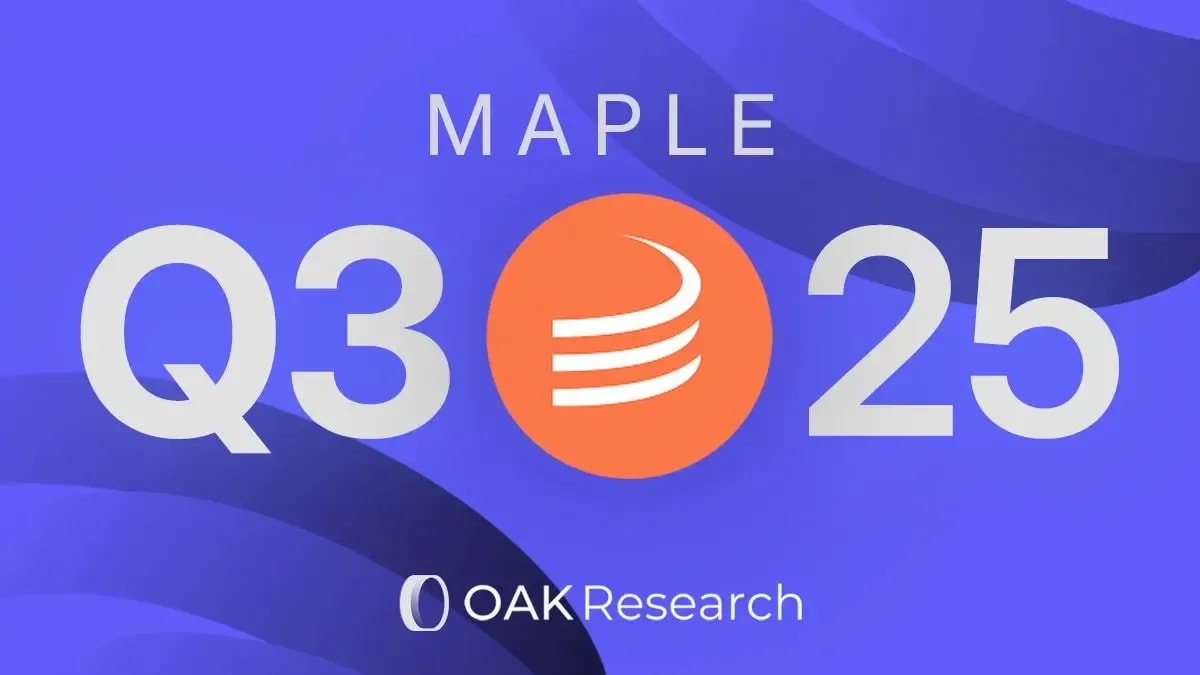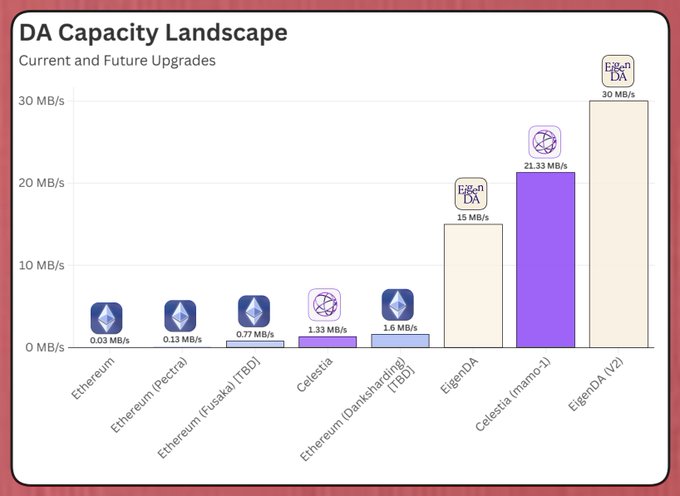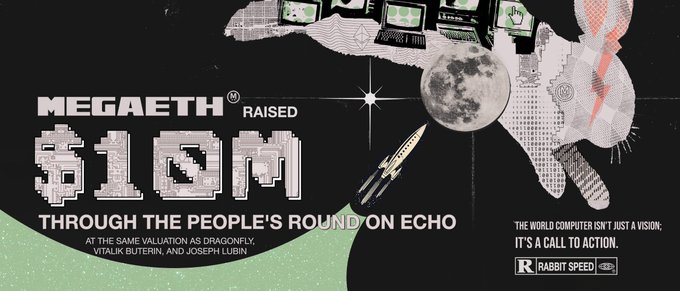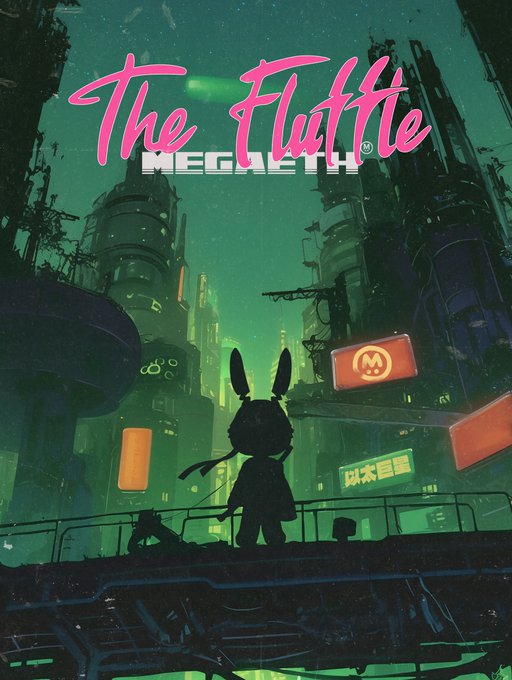Introduction & Context
With the growing number of interviews, podcasts, and Spaces on X, some interviews fly under the radar, are incomplete, or don’t receive the attention they deserve. The goal of Analyst Notes is to provide users with a clearer way to find key takeaways, contextual information, and fact checks of select interviews.
In this second edition of Analyst Notes, we selected the interview of BreadGuy, a key member of the MegaETH team, hosted by Decrypted, a French crypto media outlet.
MegaETH is an Ethereum Layer 2 blockchain and arguably the most anticipated L2 launch of the year, thanks to its unique technical architecture and unconventional vision. We believe this interview includes many valuable insights worth revisiting and exploring in greater depth.
If you find this article useful, consider watching the full interview on Decrypted’s X account and supporting their work. Let’s dive into the second edition of Analyst Notes.
→ Check out our full MegaETH analysis:
Loading post...
Analyst Notes
Note 1 - What type of L2 is MegaETH?
CONTEXT
At the start of the interview (1:20), BreadGuy outlines the difference between typical rollups and Optimiums like MegaETH.
Standard rollups post both cryptographic proofs and data availability (DA) to Ethereum to maximize inherited security. However, this is expensive and hard to scale.
MegaETH takes a different route: while it posts proofs to Ethereum, it uses EigenDA to publish data, significantly reducing costs and enabling full optimization of the EVM.
Note 2 - The founders are low-latency system experts
CONTEXT
Around the 3:30 mark, BreadGuy emphasizes the technical background of the MegaETH team to justify their ambitious claims-particularly around performance, data distribution, and consensus.
FACT CHECK
Lei Yang, co-founder and CTO of MegaETH, holds a PhD in Computer Science from MIT. His thesis focused on consensus efficiency and synchronization in distributed systems. Prior to founding MegaETH, he worked on high-performance systems such as Dispersed Ledger and Rateless IBLTs.
Yilong Yi, also a co-founder, holds a PhD in Computer Science from Stanford. As BreadGuy mentions, he previously worked on optimizing data distribution in data centers, achieving nanosecond-level performance. This is confirmed on his LinkedIn profile, which lists a 2014 position at “Runtime Verification.”
Note 3 - Why EigenDA and not Celestia?
CONTEXT
According to BreadGuy (5:30), MegaETH is building an architecture that is "too fast" for most existing infrastructures in the ecosystem due to the sheer volume of data required.
He explains that Celestia was not a viable option, citing its 3.5 Mb/s bandwidth compared to 15 Mb/s for EigenDA. He even claims that this won’t be enough long term, estimating that MegaETH will need 18-20 Mb/s.
EigenDA is also more aligned with Ethereum. While it's less integrated than Ethereum's native blobs, it leverages EigenLayer’s restaking mechanism on Ethereum, which indirectly benefits ETH-unlike Celestia.
FACT CHECK
Celestia has stated its bandwidth is not 3.5 Mb/s but 1.33 Mb/s, while EigenDA does indeed deliver 15 Mb/s. These numbers have been confirmed with the Celestia and EigenDA teams. However, as with blockchain TPS metrics, these figures are difficult to verify in real-world conditions due to limited current demand.
Note: Celestia recently announced mamo-1 on their testnet, which allows throughput above 21 Mb/s. According to Nick White, Celestia’s COO, this upgrade is expected to be ready for mainnet before year-end.
Loading tweet...
Note 4 - Sequencer rotation coming soon?
HIGHLIGHT
After discussing the choice to use a single sequencer (rather than consensus) to maximize performance and achieve 10 ms block times-with a future target of 1 ms-BreadGuy hints at plans to introduce sequencer rotation in MegaETH.
He envisions a set of 10 to 20 sequencers taking turns to produce blocks. This would maintain the speed benefits of a single sequencer while improving resistance to censorship or failure through rotation.
When asked about permissionlessness, BreadGuy clarifies that sequencers will be permissioned and required to stake assets. This would enable slashing mechanisms in case of misbehavior during their sequencing turn.
While the token to be used for slashing isn’t confirmed, it’s very likely to involve MegaETH’s forthcoming native token.
Note 5 - New Use Cases
HIGHLIGHT
In response to a question about use cases (13:30), BreadGuy discusses the possibility of market makers physically locating near sequencers to minimize latency caused by internet speed, taking full advantage of MegaETH’s millisecond-level execution.
Such low latency opens the door to managing a real-time, on-chain order book-delivering ultra-fast DeFi performance and enabling a predictable and optimized trading business.
BreadGuy also notes that the MegaETH team is working on embedding an oracle directly into the sequencer. This would allow near-instantaneous access to oracle data, enabling tight collaboration with market makers and greater overall efficiency in DeFi.
Finally, he mentions Biomes, a fully on-chain game where every player movement is a transaction. This allows smart contracts to trigger in-game events dynamically based on a player’s position-offering a responsive and decentralized gaming experience.
FACT CHECK
Since the interview, the Biomes account appears to have been sold, and the original project is no longer active. However, the MegaETH team launched an alternative game, Crossy Fluffy-inspired by Crossy Road-where every movement is recorded on-chain. It has stress-tested the testnet, peaking at over 1,000 TPS on average.
Loading tweet...
Note 6 - MegaETH Security: From Optimium to Validium
HIGHLIGHT
When asked about MegaETH’s security model (17:00), BreadGuy explains that MegaETH is an optimistic Layer 2 like Arbitrum, Base, or Optimism. However, since it doesn’t use Ethereum for data availability (DA), it isn’t technically a rollup and is instead categorized as an Optimium-a type of L2 generally considered less secure.
There is interest in transitioning to a ZK-based proof system, which would reclassify MegaETH as a Validium, but this depends on advancements in proving time and cost.
In the meantime, MegaETH adopts a similar roadmap to other L2s to ensure user fund safety. Notably, it allows users to bypass the sequencer and withdraw their funds in case of a failure.
Note 7 - Is interoperability a concern?
CONTEXT
Since MegaETH uses EigenDA instead of Ethereum blobs for data availability, questions arise about its composability with other L2s. Composability means the ability to natively and efficiently use smart contracts or assets from another chain.
Rollups that leverage Ethereum’s DA benefit from strong interoperability. That’s the vision behind Optimism’s Superchain-a network of L2s operating together like one mega-chain. This is referred to as horizontal scaling, as opposed to vertical scaling, which increases a sequencer’s power for greater scalability.
OPINION
BreadGuy shares his thoughts on the “Ethereum alignment” philosophy that Base, Optimism, and Arbitrum follow. He argues that such L2s must use Ethereum blobs because their native scalability isn’t sufficient to support massive adoption.
MegaETH takes a different stance. According to BreadGuy, users won’t need to leave the chain because vertical scaling will handle increased demand. This is a monolithic approach built on modular technical advantages. He even compares it to Solana (21:05).
Although MegaETH will be interoperable with all L1s and L2s, its focus isn’t composability-it’s technical performance that no other network can match.
Note 8 - Specialization of Nodes
CONTEXT
Regarding MegaETH’s architecture (32:10), BreadGuy notes that the sequencer is so high-performance that full nodes (which re-execute and store all transactions) require extremely powerful hardware-beyond the reach of the average user. While technically permissionless, few entities can run them.
To address this, MegaETH introduces two lighter, permissionless node types to reinforce network security:
- Replica Node: These nodes receive state diffs from the sequencer-summarizing state changes at the end of each batch instead of re-executing every transaction. This is akin to a receipt and drastically lowers computing requirements. The downside is that it trusts the sequencer.
- Prover: An even lighter node that verifies the validity of these state diffs and sends a proof to the Replica Node.
The Replica Node then cross-checks the data with the Prover’s output. This setup is unique among L2s and helps balance the centralized nature of a high-speed sequencer by adding lightweight, trust-minimized, permissionless roles.
Note 9 - The most popular fundraising round
CONTEXT
When asked about MegaETH’s community focus (37:20), BreadGuy says the project deliberately avoided raising excessive capital from institutional investors. Instead, they held a $20M round in June 2024.
He adds that MegaETH wants to democratize participation through public sales like the one held on Echo. This approach recalls a time when fundraising was more public and value creation was shared among teams, investors, and active users.
FACT CHECK
A public raise did happen on Echo, a platform that avoids ICO restrictions by offering regulated investment rounds instead of direct token sales.
It launched on December 13, 2024, with a target of $4.2M reached in just 56 seconds. Due to high demand, the cap was raised to $10M and filled in 70 more seconds. A total of 3,000 investors from 98 countries participated. The project’s fully diluted valuation (FDV) was estimated at $200M.
Loading tweet...
Later, MegaETH held another raise via 10,000 NFTs called The Fluffle, each sold for 1 ETH. These dynamic NFTs represent at least 5% of the total token supply, with potential for a higher allocation based on collection metrics. Estimates suggest they offer exposure to ~$500M FDV, with 50% unlocked at TGE and the remainder vested over 6 months.
Loading tweet...
BreadGuy was right: MegaETH’s fundraising approach is radically different, favoring public participation. While some criticized the valuation, VC interest in the project is extremely high-likely leading to equally large private rounds if pursued.
Note 10 - The impact of MegaMafia
HIGHLIGHT
At the 40:00 mark, BreadGuy presents MegaMafia, a hand-picked group of developers curated by the MegaETH team to build the best apps possible. It acts as a true ecosystem accelerator. According to him, 15 projects are already part of it.
The group targets talented and ambitious developers with disruptive ideas that leverage MegaETH’s scalability. Examples include the aforementioned on-chain game, an on-chain VPN, and a global 3D modeling engine.
The MegaMafia cohort spent 30 days together in a hotel in Chiang Mai to build close bonds and foster real collaboration between projects. The goal is to create synergy within the MegaETH ecosystem.
Outside this elite group, MegaETH also offers an open dev program-a more traditional builder support model found across the crypto ecosystem.
Analyst Conclusion
BreadGuy is the ideal guest: as a prolific influencer on X, he has a gift for simplifying complex ideas and spotlighting key takeaways for users and investors alike.
In this interview, he presents an L2 that breaks from the norm-focused on extreme scalability, even at the cost of composability, Ethereum alignment, or certain security guarantees. Yet, MegaETH compensates with architectural innovations that address these trade-offs.
As he puts it, MegaETH isn’t here to compete with Ethereum-it’s here to help Ethereum beat Solana by leveraging L2 tech to deliver unmatched scale while remaining EVM-compatible. This expands ETH’s utility in a highly dynamic ecosystem.
The project focuses on powerful apps that fully exploit its technical edge, creating unique experiences impossible elsewhere. This developer-first strategy is embodied by MegaMafia-a curated network fostering tight project collaboration rather than just handing out grants.
In a Layer 2 landscape full of lookalikes, MegaETH stands apart with its vision, culture, and technical depth. Everything suggests it’s poised to become a leading force-one that could force the entire industry to rethink its assumptions.









